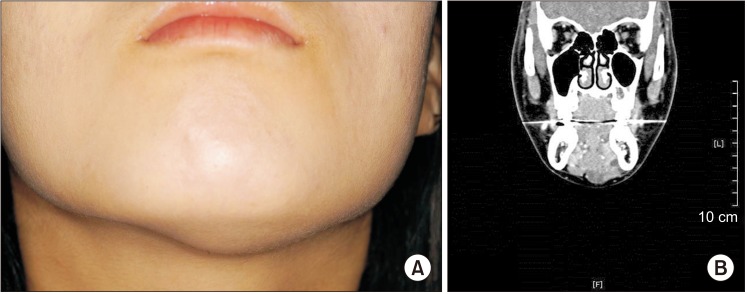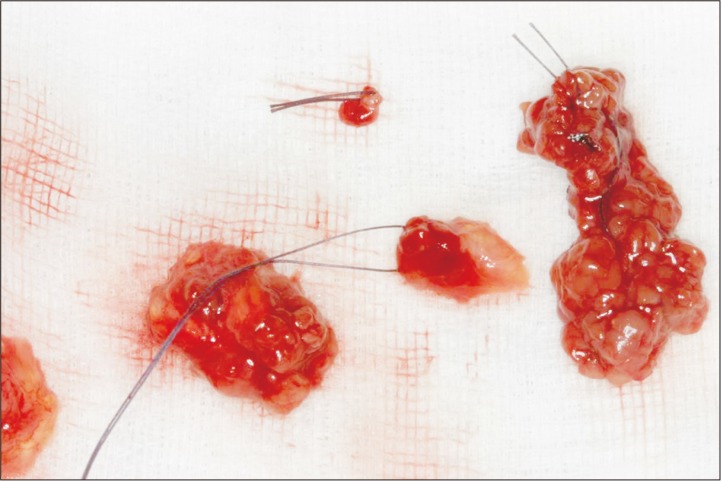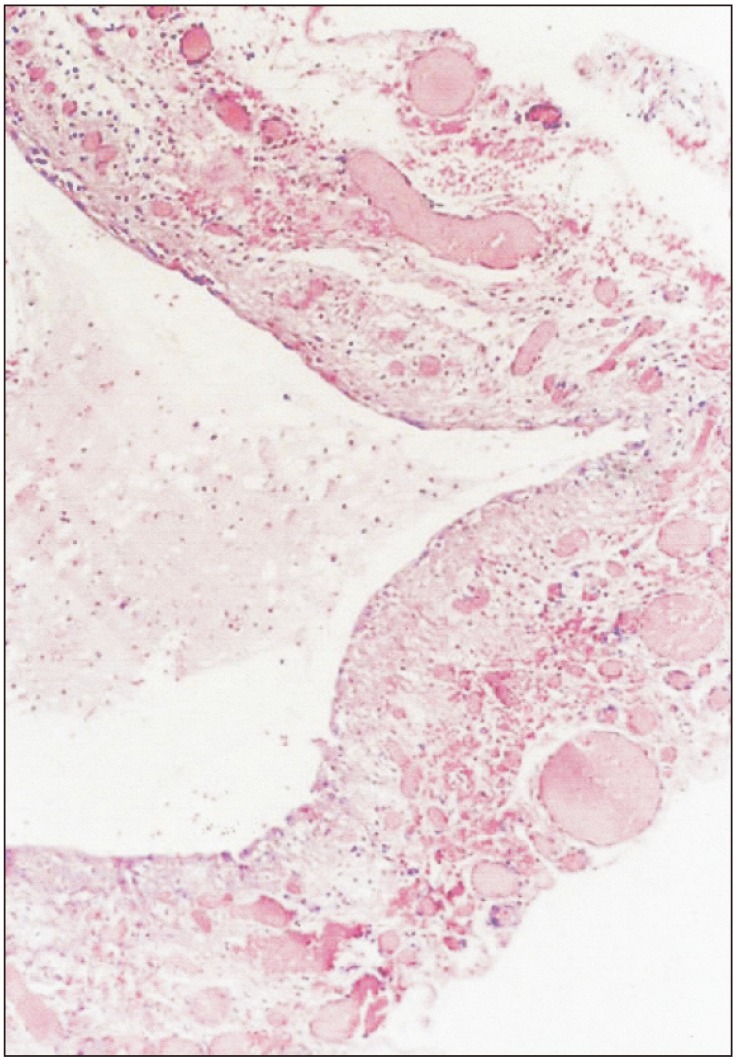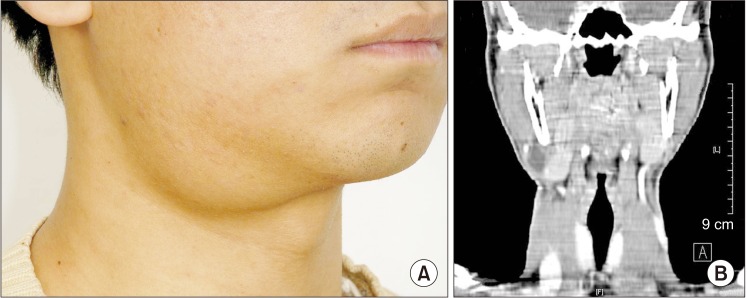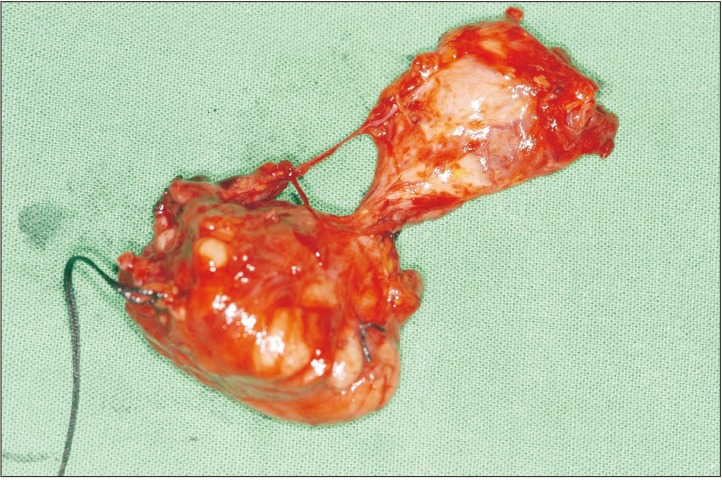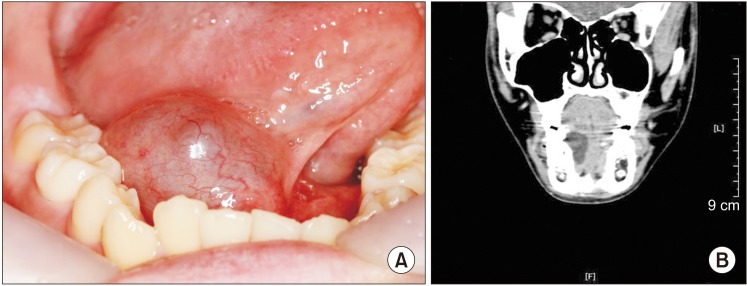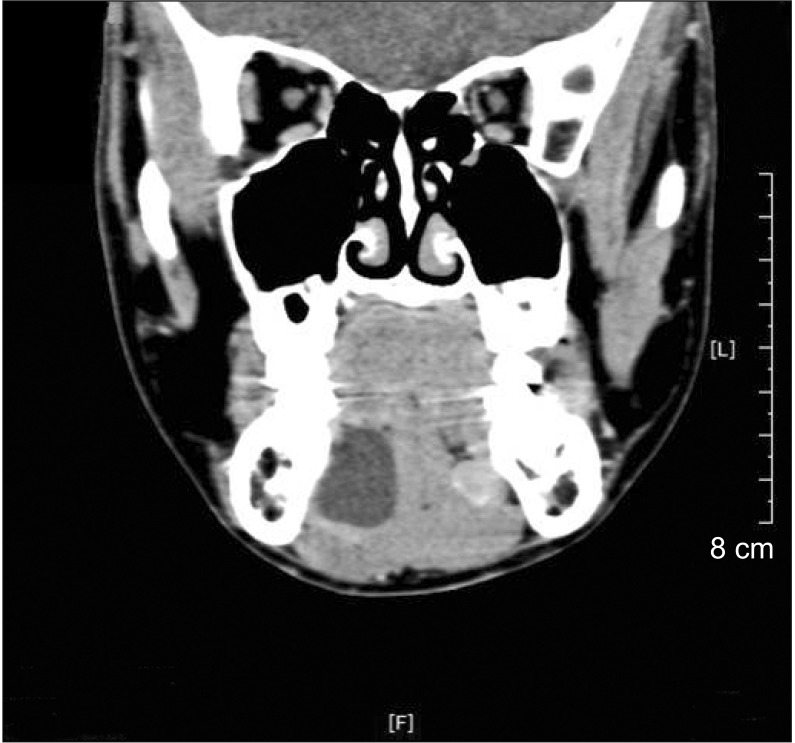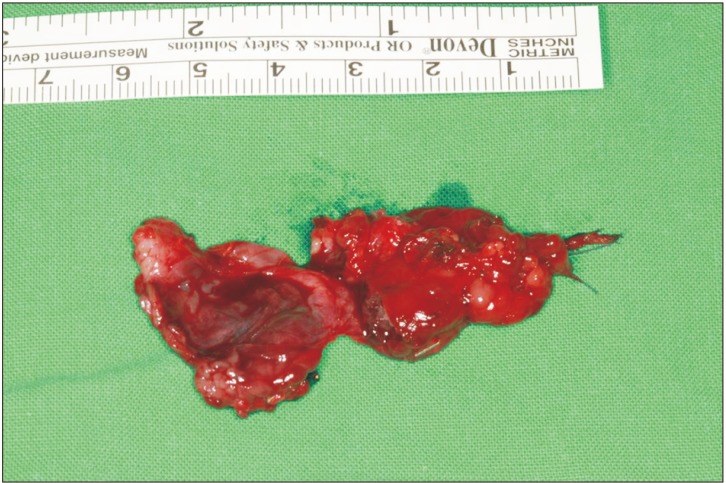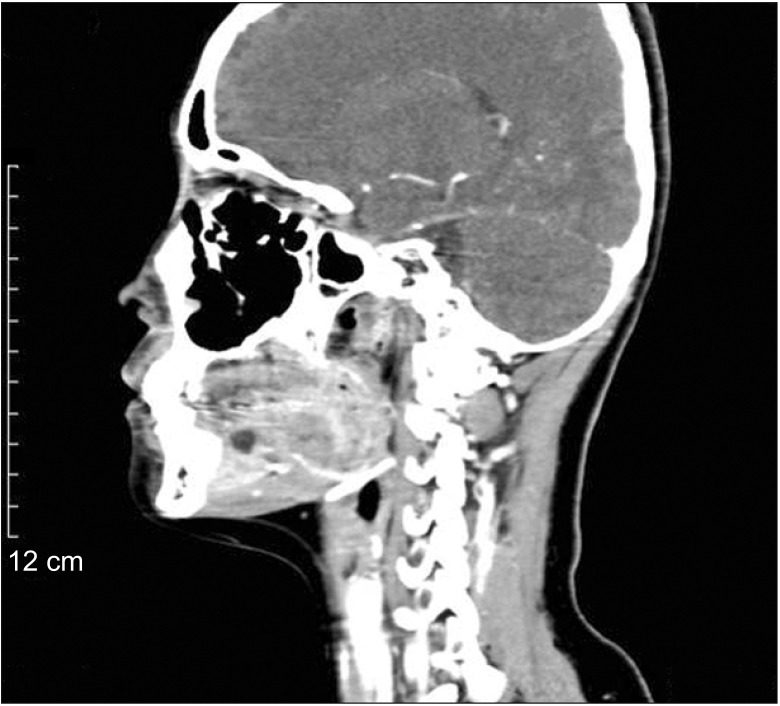J Korean Assoc Oral Maxillofac Surg.
2019 Dec;45(6):357-363. 10.5125/jkaoms.2019.45.6.357.
Case report of the management of the ranula
- Affiliations
-
- 1Department of Oral and Maxillofacial Surgery, College of Dentistry, Wonkwang University, Iksan, Korea. omschoi@wonkwang.ac.kr
- KMID: 2467188
- DOI: http://doi.org/10.5125/jkaoms.2019.45.6.357
Abstract
- Ranula is a mucocele caused by extravasation of the sublingual gland on the floor of the mouth. The most common presentation is a cystic mass in the floor of the mouth. A portion of the sublingual gland could herniate through the mylohyoid muscle, and its extravasated mucin can spread along this hiatus into submandibular and submental spaces and cause cervical swelling. This phenomenon is called plunging ranula. A variety of treatments for ranula has been suggested and include aspiration of cystic fluid, sclerotherapy, marsupialization, incision and drainage, ranula excision only, and excision of the sublingual gland with or without ranula. Those various treatments have shown diverse results. Most surgeons agree that removal of the sublingual gland is necessary in oral and plunging ranula. Four patients with ranula were investigated retrospectively, and treatment methods based on literature review were attempted.
Keyword
MeSH Terms
Figure
Reference
-
1. Zhi K, Gao L, Ren W. What is new in management of pediatric ranula? Curr Opin Otolaryngol Head Neck Surg. 2014; 22:525–529. PMID: 25211709.
Article2. Zhao YF, Jia Y, Chen XM, Zhang WF. Clinical review of 580 ranulas. Oral Surg Oral Med Oral Pathol Oral Radiol Endod. 2004; 98:281–287. PMID: 15356464.
Article3. Harrison JD. Modern management and pathophysiology of ranula: literature review. Head Neck. 2010; 32:1310–1320. PMID: 20054853.
Article4. Parekh D, Stewart M, Joseph C, Lawson HH. Plunging ranula: a report of three cases and review of the literature. Br J Surg. 1987; 74:307–309. PMID: 3580808.
Article5. Zhi K, Wen Y, Ren W, Zhang Y. Management of infant ranula. Int J Pediatr Otorhinolaryngol. 2008; 72:823–826. PMID: 18387677.
Article6. Anastassov GE, Haiavy J, Solodnik P, Lee H, Lumerman H. Submandibular gland mucocele: diagnosis and management. Oral Surg Oral Med Oral Pathol Oral Radiol Endod. 2000; 89:159–163. PMID: 10673650.7. Crysdale WS, Mendelsohn JD, Conley S. Ranulas--mucoceles of the oral cavity: experience in 26 children. Laryngoscope. 1988; 98:296–298. PMID: 3343879.8. Yoshimura Y, Obara S, Kondoh T, Naitoh S. A comparison of three methods used for treatment of ranula. J Oral Maxillofac Surg. 1995; 53:280–282. PMID: 7861278.
Article9. Shelley MJ, Yeung KH, Bowley NB, Sneddon KJ. A rare case of an extensive plunging ranula: discussion of imaging, diagnosis, and management. Oral Surg Oral Med Oral Pathol Oral Radiol Endod. 2002; 93:743–746. PMID: 12142883.
Article10. Patel MR, Deal AM, Shockley WW. Oral and plunging ranulas: what is the most effective treatment? Laryngoscope. 2009; 119:1501–1509. PMID: 19504549.
Article11. Baurmash HD. Marsupialization for treatment of oral ranula: a second look at the procedure. J Oral Maxillofac Surg. 1992; 50:1274–1279. PMID: 1447605.
Article12. Morita Y, Sato K, Kawana M, Takahasi S, Ikarashi F. Treatment of ranula--excision of the sublingual gland versus marsupialization. Auris Nasus Larynx. 2003; 30:311–314. PMID: 12927300.
Article13. Baurmash HD. A case against sublingual gland removal as primary treatment of ranulas. J Oral Maxillofac Surg. 2007; 65:117–121. PMID: 17174775.
Article14. Chung IK, Lee HJ, Hwang DS, Kim YD, Park HR, Shin SH, et al. Partial sublingual glandectomy with ranula excision: a new conservative method for treatment. J Korean Assoc Oral Maxillofac Surg. 2012; 38:160–165.
Article15. Kim PD, Simental A Jr. Treatment of ranulas. Oper Tech Otolaryngol. 2008; 19:240–242.
Article
- Full Text Links
- Actions
-
Cited
- CITED
-
- Close
- Share
- Similar articles
-
- PLUNGING RANULA IN A 4-YEAR-OLD CHILD: REPORT OF A CASE
- Transoral Drainage of Plunging Ranula using Intraoperative Ultrasonography after Sublingual Gland Resection: A Case Report
- A Case of Bilateral Plunging Ranula
- Analysis of Treatment Result According to Operative Methods for Ranula
- A case report of Plunging ranula with metastatic adenocarcinoma

